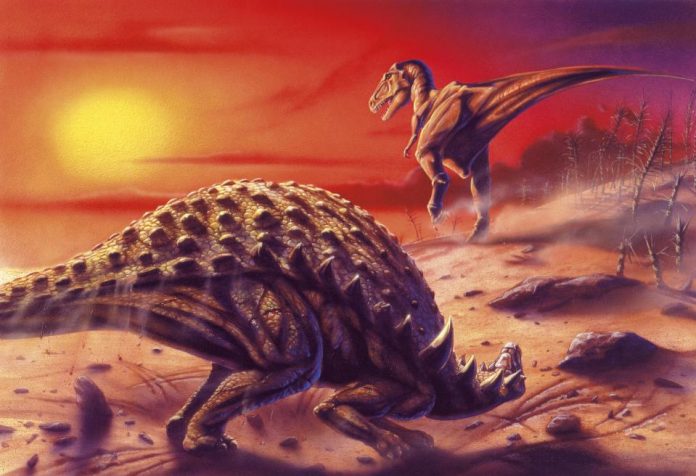Chemical traces found in the shell of a marine bivalve suggest that Earth turned faster around its own axis some 65 million years ago than it does today, rotating 372 times a year, compared to the current 365 daily full rotations.
Rudists were large-sized bivalves, closely related to modern clams, living in shallow areas of the Cretaceous sea. Sixty-five million years ago they went extinct, together with ammonites, flying reptiles, large sea-reptiles and the dinosaurs. Their fossil shells are nowadays found in dry areas, like the Alps and the Arabian peninsula, former shallow water platforms of the Thetys Ocean, a vast marine seaway spanning from modern America to China.
Studying the chemical composition of a section of a fossilized rudist, researchers from the Free University of Brussels were able to identify chemical variations related to the daily rise and fall of the sea level. Their published results show that in the last days of the dinosaurs, Earth was spinning at a faster rate around its axis, resulting in days half an hour shorter than today.
Every day the rudist formed a thin layer of new carbonate for its shell. Rudist shells grow exceptionally fast, changing their chemical composition every few hours. Unlike modern bivalves, feeding by filtering suspended particles from the water, rudists lived in symbiosis with phototrophic microalgae. The daily rise and fall of the sea level during high and low tide changed the light reaching the bottom of the sea. The resulting changes in the metabolism rate of the symbiotic algae caused variation in the chemical composition of the rudist’s shell, measured by the researchers. Counting the daily chemical variations in the approximately 9-year-old rudist specimen, the researchers were able to identify 372 days for each year.
The length of a year has been constant over Earth’s history, because Earth’s orbit around the Sun does not change. But the number of days within a year has been diminishing over time because days have been growing longer. The gravitational pull of the Moon controlling the ocean tides also causes a lot of friction, slowing down Earth’s rotation and increasing the lenght of a day over geological time. Data from fossil corals shows that approximately 400 million years ago there were little over 400 days in a year.





























